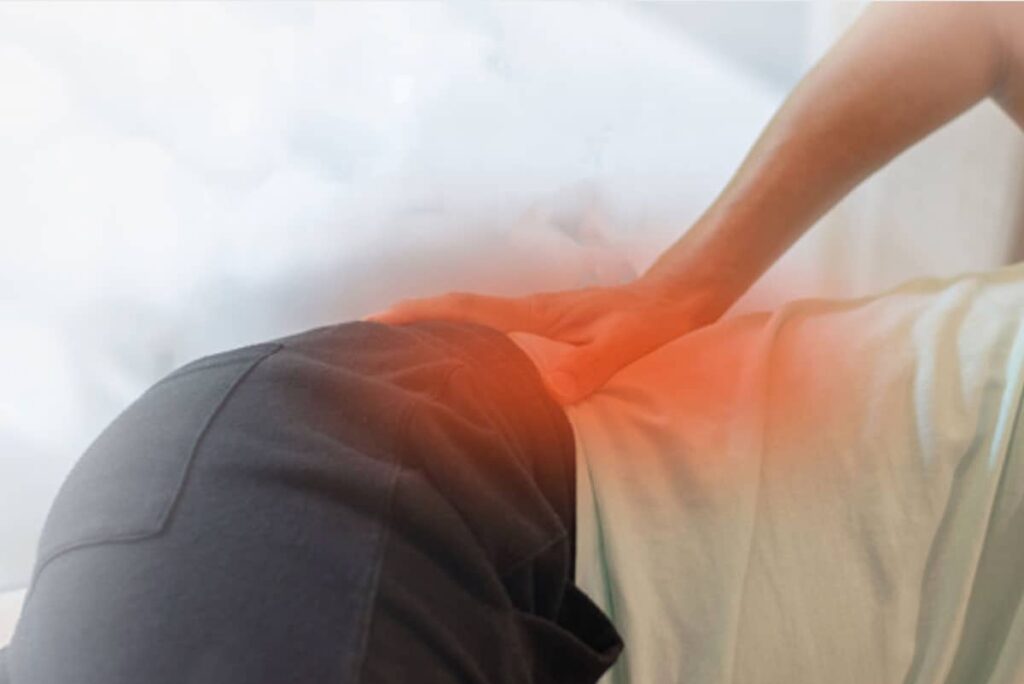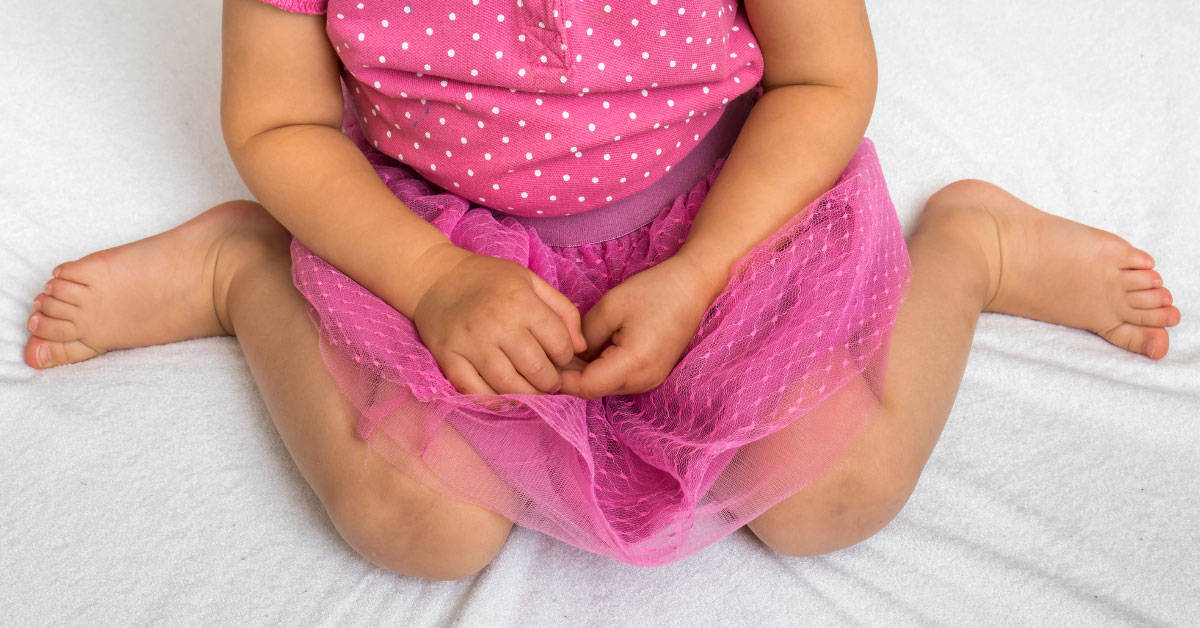W-sitting is a position a child makes when seated on the floor that resembles the shape of the letter “W” when viewing from above.
Table of Contents
- What is W-Sitting?
- Why Do Children Sit in the W-sitting Position?
- What is Wrong With W-sitting?
- How Can I Help My Child Stop Sitting in a W-sitting Position?
What is W-Sitting?

W-sitting happens when the knees are bent, the feet are outside of the hips, and the child’s bottom is on the floor. W-Sitting is common, and it is part of typical development for children up to 18 months of age. Sitting in the “W” position gives the child a wide base of support during play and other activities. In this position, they do not need to use their core muscles as much to sit upright. Nevertheless, sitting in this position too often may indicate a larger issue at hand. Overuse of this sitting habit can lead to low muscle tone. W-sitting can be an indication of an underlying issue with gross motor skills and fine motor development. It can result in core weakness, poor balance, or in some cases, a developmental problem that requires care like Down Syndrome.
Why Do Children Sit in the W-sitting Position?
Habit
Some children sit in the W-sitting position because they have made it a sitting habit. While this is a comfortable sitting position for some children, it may become a sitting habit that makes it uncomfortable to sit any other way due to developed muscle tightness.
Core Weakness and Poor Balance
Some children with weak core muscles tend to sit in the W-sitting position as this position provides them with a wider base of support. It allows the child to hold themselves upright without having to work as hard on maintaining their balance. They do not need to use a chair, and they have a lower center of gravity. This position allows them to play with toys and access the floor more comfortably. Although anyone can sit in this position, it is a transitional position not meant for long periods.
Structural Abnormality of Hips
Sitting in the W-sitting position may also suggest anatomical differences in their hip joint. The differences are where their thigh bone twists inwardly. Femoral anteversion is a structural abnormality of the hips, which causes an increased twist in some children. The International Hip Dysplasia Institute indicates, however, that with continued bone growth, the bone twist goes away naturally in 99% of children without intervention.
Symmetrical Tonic Neck Reflex (STNR), may influence or promote W-sitting position in some children past 12 months. Although standard and necessary, by 9-10 months of age, this transitional brainstem reflex typically fades. Babies need to transition from lying on the floor to crawling and eventually walking. By this point in their developmental timetable, babies must unlink their heads’ reflex movement from their arms and legs’ reflex movement. Although not commonly seen in infants, this reflex’s exaggerated form may persist in infants with cerebral palsy.
What is Wrong With W-sitting?
Poor Posture
In communication, the hands, feet, and body can all help enhance one’s self expression. The same is valid for children. Infants and children use non-verbal communication to communicate their emotions before their ability to speak. The way the body positions itself, or body posture, can be influenced by early childhood habits. Healthy posture evolves from training the body to walk, sit, and stand in ways conducive to the muscles, limbs, and joints. Therefore, therapists discourage prolonged w-sitting because it can contribute to an excessive posterior tilt. An excessive posterior tilt is what leads to slouching and hunching. Extreme hunching results in minimal trunk extensor activation and poor sitting posture cycle due to muscle weakness.
After creating the habit, the W-sitting position can make it uncomfortable to sit any other way because of developing muscle tightness. This progression stems from prolonged sitting in this position that creates instability in the hip and decreased core activation over time. This problem extends beyond physical activity as it can even impact attention span.
Decreased Core Activation
W-sitting discourages the use of core muscles. Core muscle use is important to avoid becoming fatigued and incurring injuries, but with W-sitting, the core muscles are not used. When children are in the W-sitting position, their wide base of support compensates for core activation. Over time, without a stable core, a child’s shoulder and wrist stability may grow weak, affecting their fine motor development or smaller muscles’ coordination in movement. This could interfere with a child’s ability to engage in activities that require the use of fine motor skills such as cutting, drawing, writing, and similar activities.

Decreased Trunk Rotation
In the W-sitting position, children are unable to shift their weight side-to-side and rotate their trunk. This is often the case when they attempt to reach out to play with the toys on the floor. Even though their toys are more accessible than in another position, they do not use their muscles to develop according to their developmental timeline.
If a child has decreased trunk rotation, they are limited in the coordination between the left and right sides of the body. This can affect their ability to use both sides of the body simultaneously, or bilateral coordination. Some examples of bilateral coordination use are:
- Writing
- Cutting
- Tying shoelaces
- Buttoning a shirt
Buttoning a shirt requires an even higher level of fine motor skills, and yet these kinds of tasks are essential daily activities. Therefore, it is essential that as early as 8 months, children begin to play with both of their hands while transferring toys and objects from one hand to another.
Joint Problems Later In Life
The W-sitting position causes stress on the hip and knee joints, leading to long-term postural problems and low back pain. When the body is resting, and the hips are in flexion, abduction, and internal rotation, or W-sitting, the hip joint grinds against the other bones at maximum impact. When an excessive amount of time is spent in this maximum contact of the joints touching, it can lead to hip pain. Hip pain can start as a young adult. Later in life, the hips can have problems, and the person can develop osteoarthritis as an adult.

Pigeon-Toed Walking
Long-term W-sitting can tighten and shorten the muscles of the legs, which can cause “pigeon-toed” walking. This can impact the child’s abilities in various gross-motor activities such as jumping, running, climbing, or riding a bike. It can also lead to gait problems.
How Can I Help My Child Stop Sitting in a W-sitting Position?
You can encourage other forms of sitting by modeling or using verbal cues.
- Cross-legged sitting: “criss-cross applesauce.”
- Long-sitting: where the child’s legs are stretched out in front of them.
- Side-sitting: where the child’s knees are bent, and both legs are pointing towards the same side of the body.
- Elbow prop: laying on tummy with elbows propped up.
- Sitting on a ball: medium or small ball with child’s feet on floor.
- Tall/half kneel: both knees or one knee on floor with upright posture.
Core Strengthening and Hip Stretching
To help the child gain stability and strength in the core, the child must sit comfortably. One way to help develop the muscles for core strength is by hip stretching. Doing the exercises with your child in a fun way can help to elongate the muscles that have been shortened as a result of sitting in the W-sitting position.
CONTACT GREATER LEARNING
An Occupational Therapist is available to help your child. If you have any concerns regarding your child’s sitting posture, contact Greater Learning for your child’s consultation and solutions. Call for a consultation or more information today!


0 Comments